Latin name: Craspedia
Category: annual and perennial herbaceous plants
Birthplace: Australia, New Zealand
Kraspedia – exclusivity and unsurpassed drumsticks
The vegetation traditional for our regions has become uninteresting to most gardeners. I want more exotics. Such unusual cultures grow in distant countries of the globe. Most of these unique ones need expensive and complex care, and some are absolutely unpretentious.
Such crops that will look great in a flower bed include craspedia.
This unique Australian exotic has bubo flowers that can be represented with drumsticks. The huge decorative potential of a rare culture allows it to look wonderful on borders, flower beds, discounts and bring a touch of uniqueness and originality to the backyard.
In addition to the colorful splendor in the gardens, florists really appreciated the craspedia. These flowers in the form of drumsticks perfectly decorate live and dry bouquets, flower arrangements and look original in florariums.
Craspedia – is a perennial flowering herbaceous culture. The genus is represented by thirty varieties of these plants in the family Asteraceae (Asteráceae) or Asteraceae (Compósitae).
Craspedia is native to Australia. It took only thirty years for these unpretentious perennials with yellow flowers, blooming all summer, to be able to spread around the world.
The habitat of the craspedia plant is moist lowland areas, while other representatives of this genus prefer to grow on hills or on mountain plains. This herbaceous crop prefers areas with a subtropical and tropical climate.
Due to the unique shape of the inflorescences and hard dried stems, craspedia has the popular name "drumsticks".
This exotic among vegetation has a unique appearance. On its erect stems with a circular cross section, which reach a meter height, and its diameter is up to four millimeters, there are no leaf plates at all. The top is decorated with a single spherical inflorescence.
The stems are very resistant to sudden gusts of wind. The leaves and stems of the plant are pale green. By autumn, the ground parts acquire a more saturated color.
Interesting rosettes are made up of wide with even edges, and sheet plates opened with a thick silvery pile. They are the base of the bush. The leaves are covered with morning dew every day, which is the main help for the moisture needed by the plant.
A unique inflorescence is represented by a solid spherical bud, which is collected from a huge number of small yellow flowers that are in close contact with each other.
Interestingly, flowers bloom first from below and from the sides. The top flowers of the ball are the latest to bloom.
The flower is assembled from jagged fused petals, slightly bent back and resembling a woman's hat. The middle of the flower looks like a small column from which stamens grow.
The inflorescence grows in diameter about three centimeters. Buds appear closer to autumn. After the end of flowering, the attractiveness of the buds does not fade away. They are perfectly kept on pagons and remain just as colorful.
Seed storage boxes are. The seeds are so small that in one gram they can count up to one and a half thousand grains.
Varieties and types of craspedia
Craspedia spherical (Craspedia globosa)
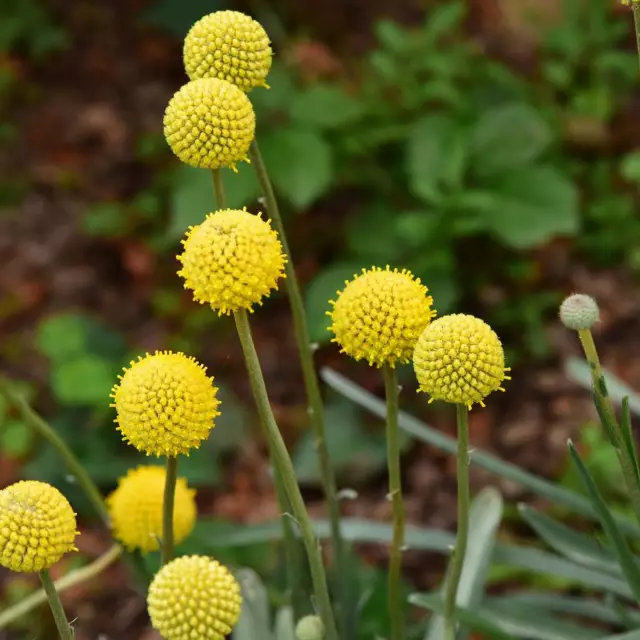 The most common species representative of craspedia in gardens and cottages. It owes its name to the inflorescence of the original spherical shape.
The most common species representative of craspedia in gardens and cottages. It owes its name to the inflorescence of the original spherical shape.
In native natural conditions, the plant is a perennial, and in regions with a cool climate, it is an annual.
The height of an adult bush can reach seventy centimeters.
Thanks to the work of breeders, gardeners got acquainted with new hybrid varieties of this variety, which differ in color:
Drumsticks Trommelstok – this variety is not afraid of frost, its soil requirements are minimal. He loves the sun, wet areas, regular feeding. Stems grow up to sixty centimeters high. A flowering bush decorates the surroundings with bright yellow balls.
Craspedia spherical Billy Button is a perennial crop, but in a cool climate zone it is an annual. The stems reach a height of up to sixty centimeters. On the sheet plates and pagons, a silvery pile is clearly expressed. On the tops of the stems, bright inflorescences of a sandy-yellow tint are piled up.
Kraspedia Golden Ball – tall, unpretentious and cold-resistant bushes up to seventy-five centimeters tall. spherical inflorescences and are yellow in color.
Craspedia uniflora
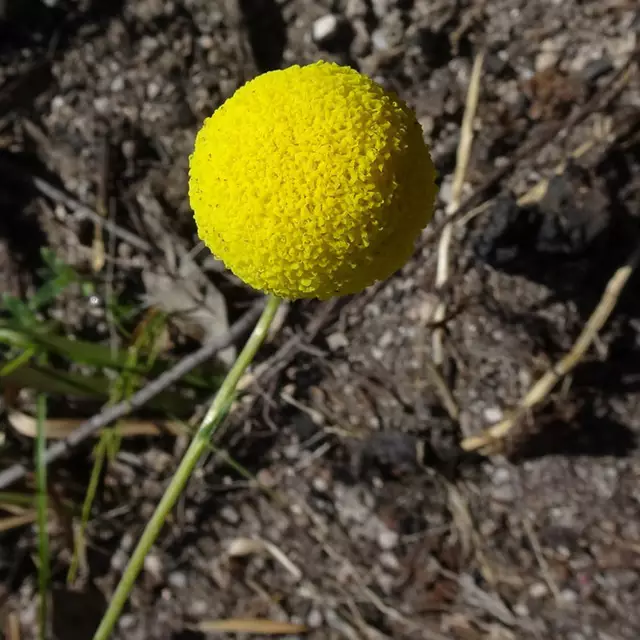 This species is native to New Zealand. Here, under natural conditions, an exotic culture reaches a height of 35 cm and spreads from the sea coast to rocky areas.
This species is native to New Zealand. Here, under natural conditions, an exotic culture reaches a height of 35 cm and spreads from the sea coast to rocky areas.
A dense basal rosette is formed by wide leaf plates. The leaves are covered with very long villi that tend to tangle.
Three-centimeter hemispherical inflorescences can have different tones from sandy to orange colors.
Reproduction of craspedia
Each culture, especially exotic, has its own characteristics. Proper and conscientious care is required to obtain a healthy plant. The maintenance procedure is preceded by the moment of planting the seeds.
It is not advisable to sow craspedia seeds in open soil - they are too small, it is extremely difficult for them to overcome even thin soil layers, this leads to their death.
Craspedia from seeds for seedlings is sown at the end of winter frosts or at the beginning of spring warming. For this procedure, a light earthen mixture with a peat additive is suitable. If desired, the seeds can be sown in peat pots, and then it is very convenient to plant them in an open garden area without damaging the roots of the sprouts.
The procedure for obtaining young craspedias is as follows:
- The prepared soil mixture must be moistened and the seeds spread on its surface. They should not be deepened and sprinkled with soil.
- If possible, arrange mini-greenhouse conditions for seeds with a film and place them in a well-lit area.
- Temperature indicators of the airspace should not be less than 20-23°С.
- Every day it is necessary to ventilate the greenhouse by removing the film for twenty minutes.
- After fifteen, twenty days friendly shoots will hatch.
- When seedlings appear, the film must be removed.
- Moderate watering is recommended.
- Light-loving babies will grow better when using additional artificial lighting with fluorescent lamps.
- When the seedlings reach a six-centimeter height, it is advisable to plant them in separate cups.
- The further procedure for caring for seedlings is high-quality moderate watering and bright lighting.
- Ready-made seedlings can be planted at the end of spring, when warming comes and there are no frosts.
- When planting sprouts, a distance between them of at least 25 cm must be observed.
Planting craspedia in open soil and caring for it
It is absolutely not difficult for experienced flower growers to grow and care for craspedia in the garden or in the country. The main thing is to master the intricacies of this process, which are represented by the usual chores:
- watering;
- top dressing;
- weeding;
- loosening.
Soil mix
Craspedia flower will grow well in fertile, nutritious, well-drained soils. The best options for good crop growth would be the presence of:
- sandy;
- sandy;
- loamy soil types.
The soil environment should be alkaline, neutral with slightly acidic reactions.
The bottom of the prepared hole must be covered with a drainage layer: fine gravel, coarse sand or stone chips. Organic matter is laid on top in the form of compost, a seedling is planted and added dropwise with prepared soil. Then the flower is watered.
Location selection
For this exotic culture, for comfortable growth and generous luxurious flowering, it is necessary to choose a bright area that is well protected from winds, cold and drafts.
If the weather is rainy and cold, the flowers will be few.
Watering craspedia
Hot moments for a southern plant, content with a dry climate in nature, are not terrible. Regular watering is carried out only when the weather is too dry.
Especially after these hot and dry days, when the leaves begin to dry out, it is necessary to water the plant – it will thank the appearance of a large number of flowers.
Young seedlings need watering. The main indicator for irrigation is dried soil.
During watering, leaf plates should remain dry.
Craspedia top dressing
During active growth, it is advisable to pamper the craspedia flower with three top dressings per season. It is desirable to feed young specimens with mineral fertilizers with impurities of nitrogenous complexes, and organic matter must also be present. When inflorescences begin to form and the entire flowering period, the plant is fed with superphosphate.
Weeding and mulching craspedia
One of the main attributes of caring for a garden exotic is weeding and removing weeds.
In order for the weeds to grow less and the water from the soil to evaporate slowly, the area near the flower must be mulched.
Pruning
To prolong and improve the quality of flowering, inflorescences that have faded should be cut off. Kraspedia in a bouquet looks great. It is excellently presented in bouquets in combination with other flowers. Wedding bouquets, boutonnieres, various flower arrangements look great with drumsticks. How to cut craspedia correctly:
- To get dry bouquets, cut off the inflorescences in the closed state, the buds should be bright yellow in color.
- Fresh bouquets will look great if they are cut when half of the buds are opened on them.
Cut flowers are dried, for this the flower heads must be at the bottom. Inflorescences retain their color and shape well. After drying, the flowers are given any color by treating them with spray paint. Especially beautiful and unusual is craspedia red, blue, green, purple, pink, orange.
How craspedia winters
All varieties of craspedia can survive only with weak short-term frosts. For areas where winters are harsh, the culture is annual. In order for the bush to survive, it must be dug up and transplanted into a flowerpot. A cool dry room is suitable for wintering craspedia. Periodically, the flower needs to be watered so that the earth does not dry out.
Pests and diseases
Craspedia has excellent immunity. Diseases and pests are not terrible for her. If the rules of care are violated, the plant may be subject to:
- The defeat of the spider mite – it is necessary to carry out the treatment with tobacco or soap infusion. If this treatment is ineffective use insecticides.
- The appearance of rot – stop watering the plant, produce a fungicide treatment.
Landscaping and craspedia
Garden plots are simply transformed when decorating paths along borders, rock gardens, flower beds with craspedia – these flowers play the role of tapeworms.
Kraspedia looks cool next to chamomile, cereals, succulents, lavender.
Kraspedia looks wonderful in the design of various interiors. One of the latest trends in design is the florarium. This is a unique spectacle – sand, shells, beads, dried flowers and other unique things fit beautifully in glass jars or vases. These unusual decorative vases will perfectly decorate shelves and countertops. At the sight of bright yellow balls of dried flowers of craspedia, warm colors are created in the room and the mood rises.
Without a doubt craspedia – these yellow garden perennials are a unique decoration in any landscape.
Other colorful cultures can be found on the site if you open the catalog of garden plants from, a to z.




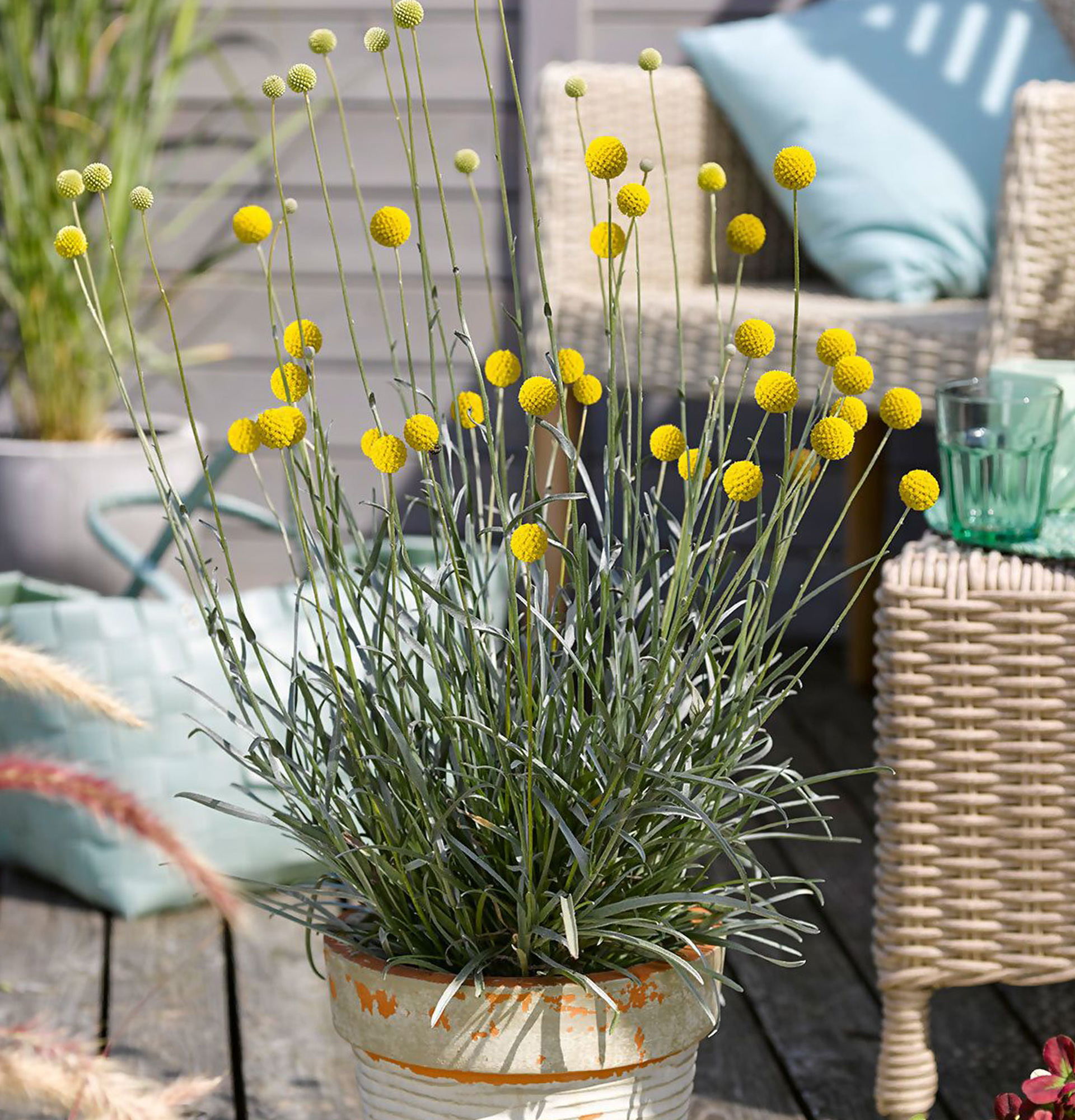










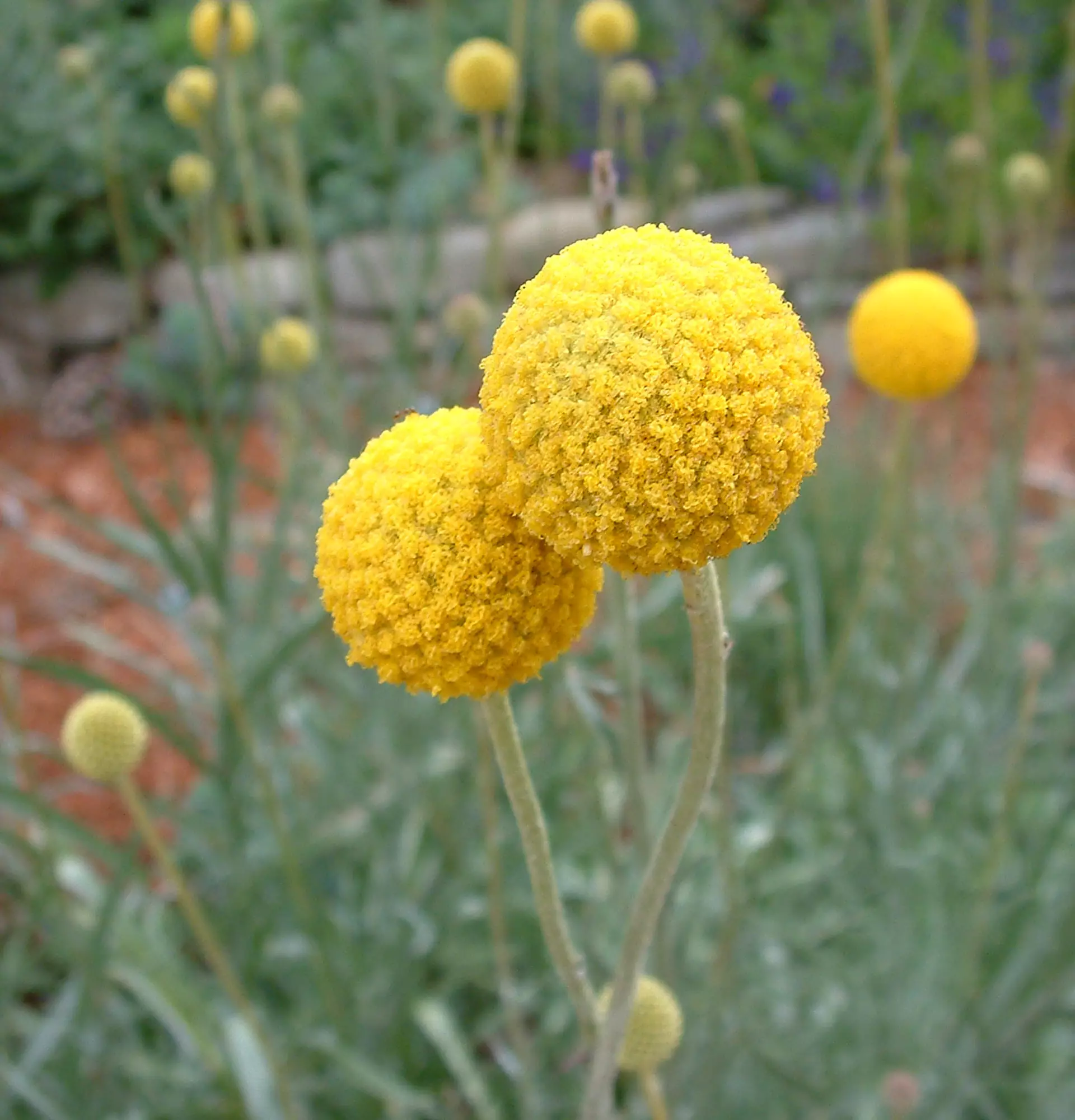
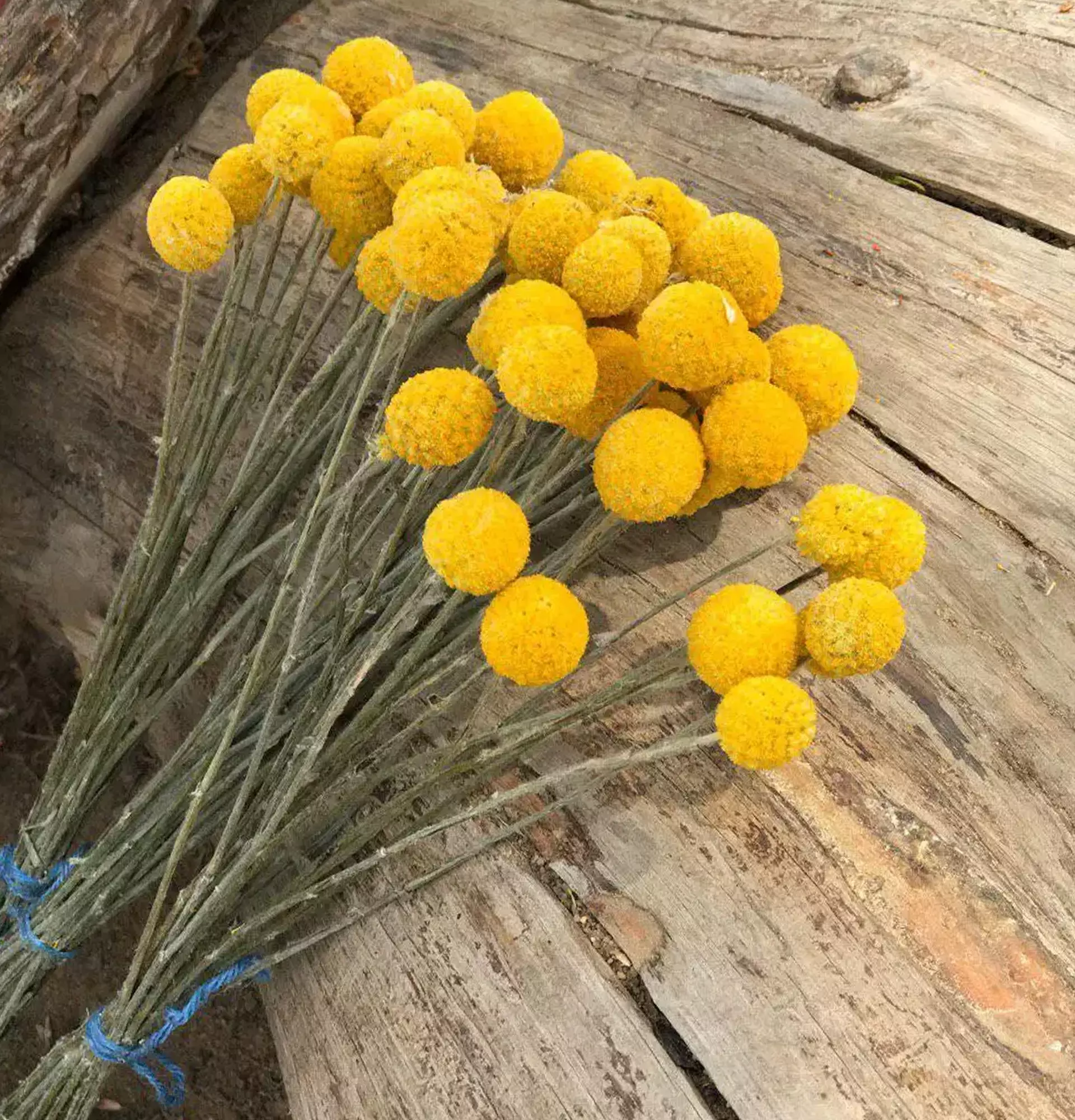
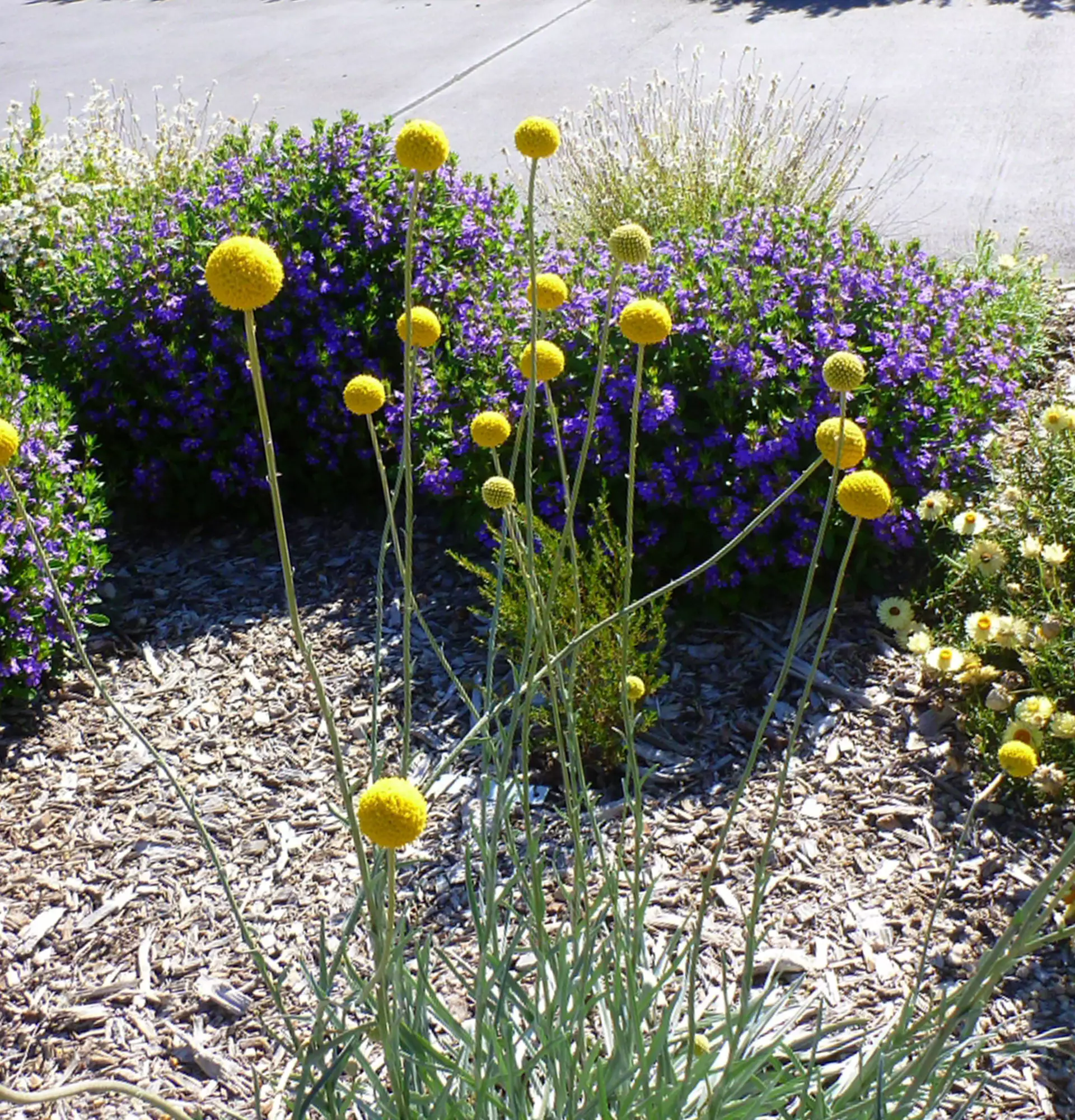
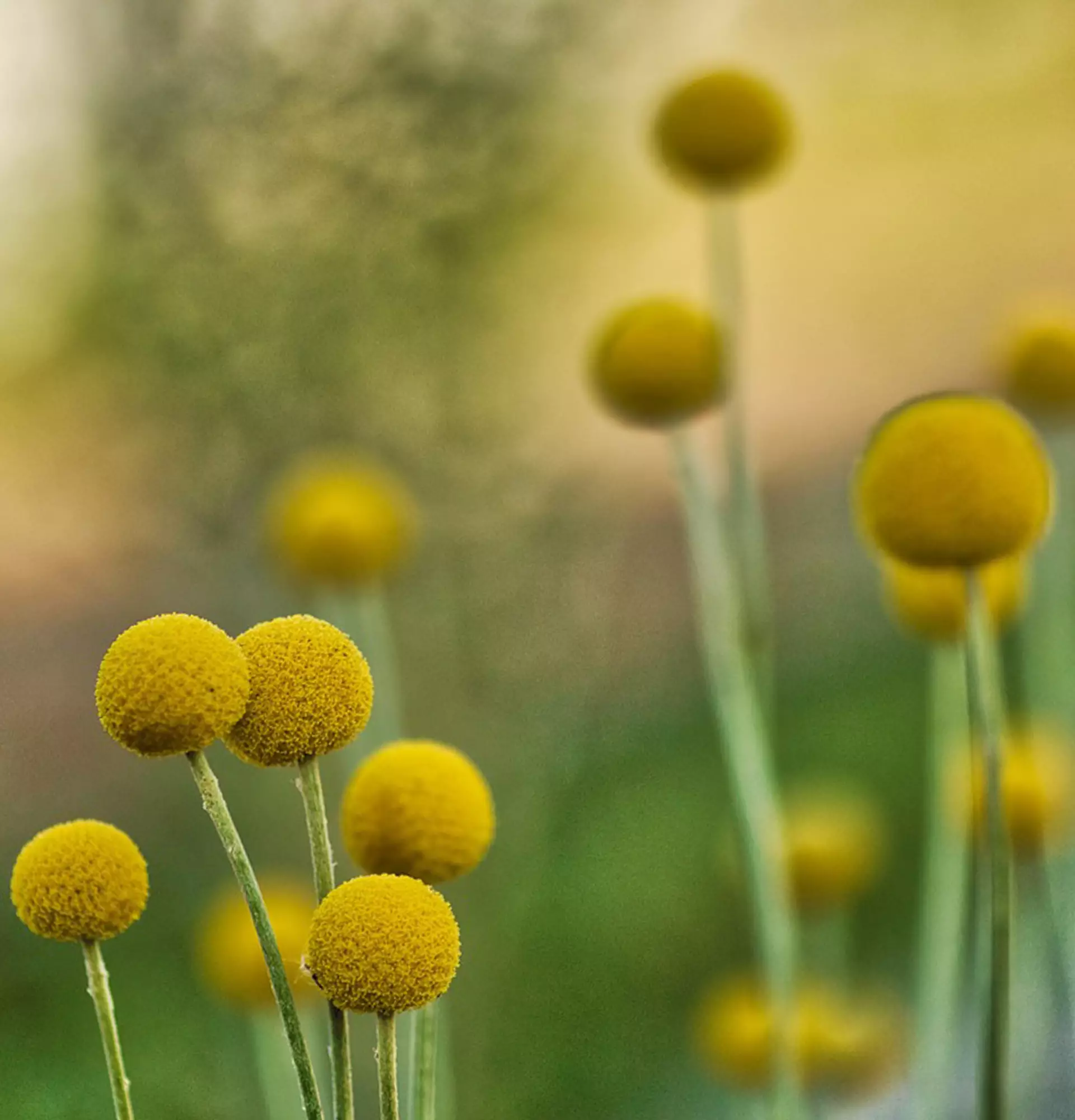
Write comments
Comments